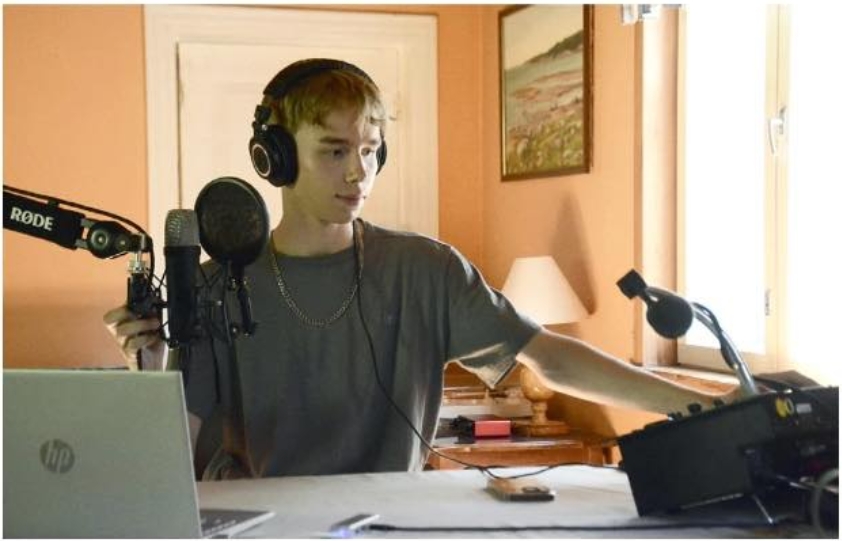Etelä-Uusimaa newspaper 07.08.2025
18-year-old Joakim Weckström is broadcasting from Tenhola, Finland
Shortwave Radio Frequencies Are Shifting Into the Hands of Enthusiasts
Shortwave radio frequencies are increasingly being made available for hobbyist use. One particularly enthusiastic young radio enthusiast is 18-year-old Joakim Weckström, who has spent the past year and a half broadcasting music programs from his self-established radio station in the Finnish countryside of Tenhola.
Weckström’s passion for radio began at just 13 years old, when he first started listening to music on the radio at his family’s place in Tenhola. At some point, his curiosity grew — he wanted to hear international stations. So he took action and installed a better antenna.
Now, Weckström has built a fully equipped radio studio on that same place. The studio features all the necessary equipment for producing and broadcasting: microphones, a computer to control the entire broadcast, and a mixer to manage channel levels and audio. The signal is transmitted via a transmitter located on the edge of a nearby field.
“I’m really fascinated by audio processing,” he says.
When it comes to shortwave radio, Weckström is drawn in by both the technical challenge and the vast distances the signals can travel.
“Shortwave isn’t confined to local reach. I get messages from listeners every week — that’s what keeps me motivated. The audience is really active,” he explains.

A Golden Era for Hobbyists
Weckström’s non-commercial station is called RealMix Radio.
It’s one of the very few shortwave stations in Finland, and broadcasts every weekend from Tenhola. The station transmits on 6195 kHz shortwave, which reaches significantly farther than traditional FM frequencies.
The station operates under a license issued by Traficom, Finland’s national communications regulatory authority.
“Broadcasting and copyright licenses are the two pillars that make this possible,” Weckström says.
Helping facilitate this is SLART ry, the Finnish Association for Shortwave Radio Stations, founded last year in Turku. The organization has been working with regulators, copyright associations, and transmitter manufacturers to explore how shortwave frequencies can be utilized for public broadcasting.
International shortwave broadcasting has steadily declined in recent years, as focus has shifted toward the internet and FM radio. As a result, shortwave is increasingly becoming the domain of independent hobbyists.
“There are only a handful of shortwave stations in Finland, but I believe more will emerge. In the past two years, interest among radio tech enthusiasts has definitely grown,” Weckström says.
⸻
Music, Interviews, and Worldwide Reach
Weckström aims to broadcast every weekend from Tenhola. The broadcasts begin late Friday night and run — a full 48-hour broadcast window. Music is at the heart of his programming, but interviews are also occasionally featured. “I’ve interviewed Sara Siipola and Movetron on the air. I’ve also had conversations with other radio enthusiasts,” he notes.
Weckström isn’t running the station alone. David, a fellow broadcaster, contributes English-language programs and music shows. In addition, DJ Mac and DJ Pera also produce their own music segments for the station. Joakim himself is responsible for music rotation, managing what plays and when.
RealMix Radio has reached listeners across Europe — and beyond.
“Once, someone from Amsterdam messaged me during the show to thank me and wish me a nice evening,” Weckström recalls.
“I’ve also gotten messages from Sweden — people are happy to hear shortwave broadcasts in Finnish again,” he adds.
Listeners can find instructions on how to tune in at realmix.fi. Shortwave stations like RealMix can be heard using any portable radio that supports SW (shortwave) bands.
⸻ Oliver Heikkinen, Etelä-Uusimaa- Lehti Etelä-Uusimaa – Hangon, Raaseporin ja Inkoon uutisia.
